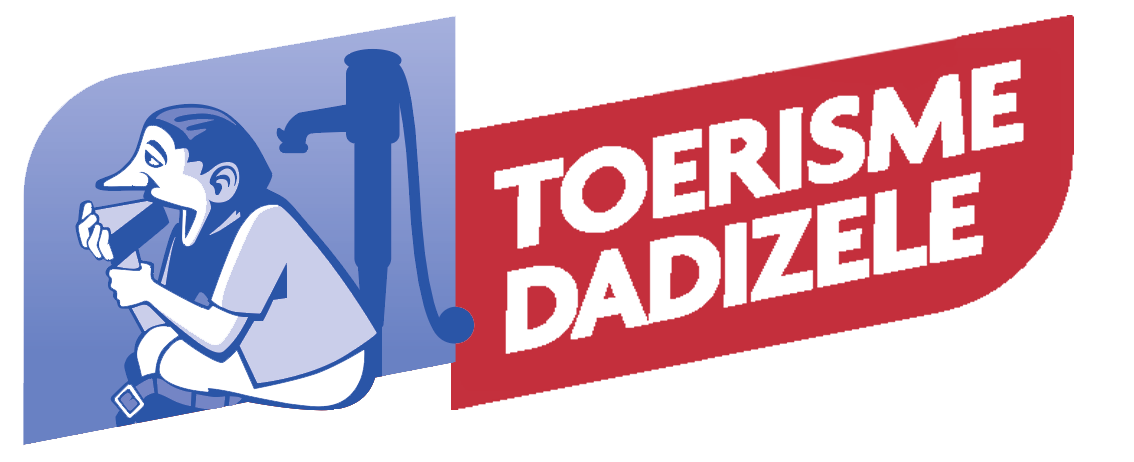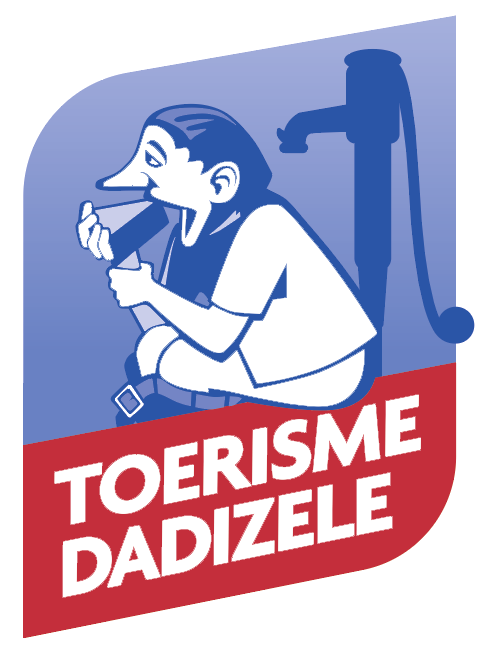Dadipark
Nederlands
Van speelplein tot Daiselpark over Ontspanningscentrum Deweer tot Dadipark.
Onder het initiatief en toeziend oog van pastoor Gaston Deweer werden in 1949 de werken aangevat op ‘het pasterstuk’ en konden in de grote vakantie van 1950 de poorten van het speelplein worden geopend voor de kinderen van Dadizele.
Naast de grootste attractie, de legendarische loopbrug, uniek in Europa en gebouwd in 1960-61, was er ‘een jongens- en meisjesspeelplein’. Vandaar twee ‘zwemkommen’, twee reuzenglijbanen, twee doolhoven, twee zandbakken… Verder draaimolens, schommels, een tennis- en voetbalveld... een grote zaal waar feesten, optredens en de Daiselse floraliën doorgingen.
Van over heel België en vanuit Noord-Frankrijk werden schoolreizen gepland naar het speelplein.
Pastoor Deweer stelde onderpastoor Georges Ghesquière aan als opvolger. Vernieuwingen werden doorgevoerd en nieuwe spelen verrijkten het familiepark. Onder andere een piratenbrug, een toeristentreintje en een reuzenrad van 15 m.
In het najaar van 1989 besloot de raad van bestuur het park te verkopen. NV Dadipark nam het park over van het bisdom Brugge.
2000: viering 50 jaar Dadipark
2003: Dadipark sluit en blijft dicht.
Na vele pogingen en hoopgevende berichten tot overname werd in 2012 een halve eeuw kinderplezier met de grond gelijkmaakt.
Français
De l'aire de jeux Daiselpark, du centre de loisirs Deweer au Dadipark
À l'initiative du Père Gaston Deweer, les travaux de la paroisse ont commencé en 1949 et, pendant les vacances d'été de 1950, les portes de la cour de récréation ont été ouvertes aux enfants de Dadizele.
Outre l'attraction principale, la plaine de jeue légendaire , unique en Europe et construite en 1960-61, il y avait une aire de jeux pour garçons et filles. Il y avait deux piscines, deux toboggans géants, deux labyrinthes et deux bacs à sable. Il y avait également des manèges, des balançoires, un court de tennis et un terrain de football, ainsi qu'une grande salle où se déroulaient les fêtes, les spectacles et la tradition florale de Dadizele.
Des voyages scolaires ont été organisés sur le terrain de jeux depuis toute la Belgique et le nord de la France.
Le père Deweer a nommé le prêtre assistant Georges Ghesquière comme son successeur. Des rénovations ont été effectuées et de nouveaux jeux ont enrichi le parc : un pont de pirates, un train touristique et une grande roue de 15 mètres.
À la fin de l'année 1989, le conseil d'administration a décidé de vendre le parc. Dadipark NV a repris le parc de l'évêché de Bruges.
2000 : célébration des 50 ans du Dadipark
2003 : le Dadipark reste fermé.
Après de nombreuses tentatives et des rapports pleins d'espoir, un demi-siècle d'amusement pour les enfants a été rasé en 2012.
English
From playground to Daiselpark, from Deweer pleasure resort to Dadipark
At the initiative of pastor Gaston Deweer, work started on the grounds of the paster in 1949 and during the summer holiday of 1950, the gates of the playground could be opened for the children of Dadizele.
In addition to the biggest attraction, the legendary walkway, unique in Europe and built in 1960-61, there was a seperate playground for boys and girls. Hence two swimming pools, two giant slides, two mazes, two sandboxes. Furthermore: merry-go-rounds, swings, a tennis and football field, a large hall where parties, performances and the Daisel florals took place.
School trips to the playground were organized from all over Belgium and from Northern France.
Pastor Deweer appointed curate Georges Ghesquière as his successor. Innovations were implemented and new games enriched the park: a pirate bridge, a tourist train and a 15 m Ferris wheel.
At the end of 1989, the board of directors decided to sell the park. NV Dadipark took over the park from the diocese of Bruges.
2000: celebration 50 years Dadipark
2003: Dadipark remains closed
After many attempts and messages of hope, half a century of childhood fun was razed to the ground in 2012.

